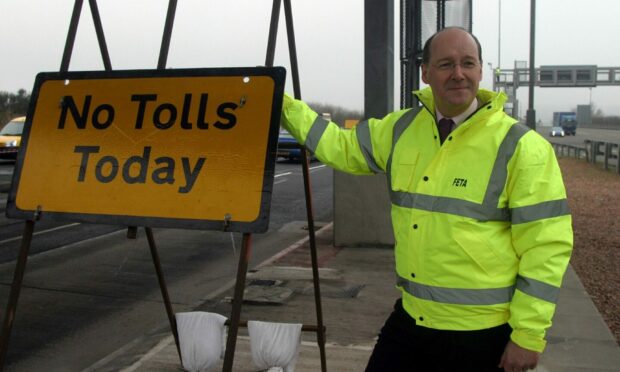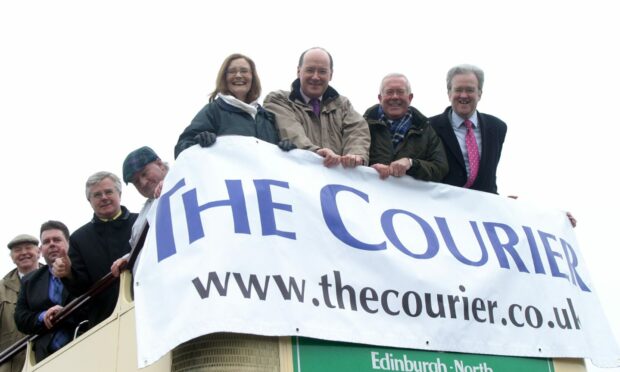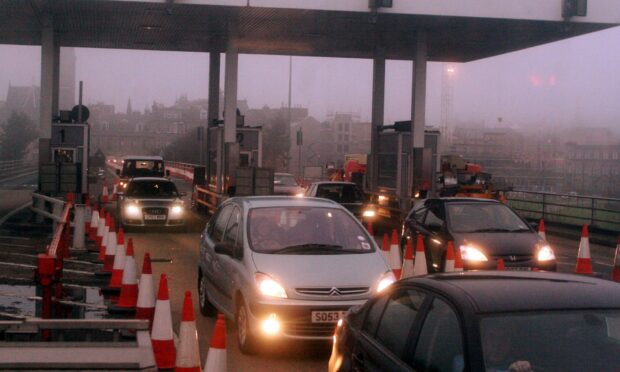The SNP could perform a dramatic U-turn by reintroducing bridge and road tolls 14 years after they were scrapped, it has emerged.
The option has been included in plans being drawn up by transport chiefs in a bid to cut car use as part of efforts to reach emissions targets.
Any move to hit motorists with such a levy would risk a major backlash, particularly amid rising concerns about the cost of living.
‘Inevitable’
However, ministers in the SNP-Green government regard the return of tolls as “inevitable”, according to a report in The Sunday Times.
Bridge tolls were a hugely controversial subject in the first decade of devolution, before the charges were removed from the Skye Bridge in 2004 and the Erskine Bridge in 2006.
Following a long-running campaign by The Courier, tolls were eventually removed from the Forth and Tay bridges when the SNP delivered on its manifesto promise after coming to power at Holyrood in 2007.
We reported last month that the Labour-Liberal Democrat executive had been pondering a £10 toll during early talks about a new road bridge over the Forth in 2006.
Motorists have saved thousands of pounds as a result of the removal of the levy.
Fresh plans for road pricing are said to be at an early stage, but it could mean motorways such as the M8 being tolled, and a return to charges for bridges and tunnels.
Glasgow City Council reportedly backs the move to help cut car journeys by 30%.
The government is aiming for a 20% reduction by the end of the decade.
Route map
According to The Sunday Times, a Transport Scotland “route map” suggests that public opinion has shifted since the 2000s, with research showing that “in 2021 more people support than oppose road pricing as a concept, with a majority of people agreeing that road pricing would reduce congestion and pollution”.
Scrapping bridge tolls has saved commuters £2,000 – one way Scottish taxpayers get the best deal anywhere in the UK. https://t.co/QZIZBxDvSI pic.twitter.com/xVuBEZnBcW
— The SNP (@theSNP) February 16, 2017
It also says that other steps to discourage car use will be explored to enable the development of a new “car demand management framework” by 2025.
This would take into account the needs of people in rural areas and island communities as well as those on low incomes.
‘Punishing ordinary Scots’
Scottish Conservative transport spokesman Graham Simpson said: “With Scotland’s public transport system in a dire state, many Scots have no choice but to drive.
“If the SNP can’t deliver a public transport system that offers a workable alternative to cars, then plans to charge drivers for using roads will only hurt motorists – without achieving any progress toward environmental goals.
“Road charging schemes may be in the mix in the future. But before punishing ordinary Scots in an effort to meet green targets, the SNP should focus on delivering a public transport system that is actually fit for purpose.”
A Transport Scotland spokesman said: “We have committed in the 20% car kilometre reduction route map to commission research exploring a range of equitable options for demand management to discourage car use, including pricing.
“This will enable the development of a new Framework for Car Demand Management by 2025, taking into account the needs of people in rural areas and people on low incomes to help ensure a just transition to net-zero.
“The research will allow Scottish Government to build the evidence base on demand management options and inform our position on the reform of reserved motoring taxes.
“Meanwhile we will continue to press the UK Government for constructive dialogue on its plans for structural reform of motoring taxation, which the UK Government itself acknowledged is inevitable and required in their recent Net Zero Review.
“Enabling legislation for road pricing is already in place in Scotland, yet no local authority has pursued this since Edinburgh held a referendum in 2005.”


